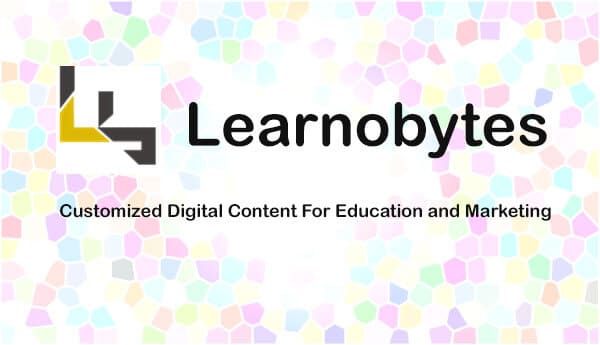India’s public education infrastructure is crumbling unable to cope with the rising demands of the millennial population. Many education startups have cropped up over the past few years who are trying to address issues facing the sector. EduTech Startups in India have managed to raise more than US$ 200 million from investors over the last two years in their quest to deliver better digital content. Learnobytes is one such firm looking to cater to the fast-growing On-Demand Digital Content market. Read on to find out more about the firm and its a mission.
Boom Time for EduTech Startups in India
1. Who are the founders of Learnobytes and were they earlier involved in other startups?
Mini Sarin is the founder of Learnobytes. This is her first start-up after a 14 year long innings in the software industry as a software developer as well as a technology trainer. Mini is passionate about story-telling and creative content generation.
2. Is Micro-content tailored to cater to the Millennial generation who have short attention spans and too much going on all the time? How is that better than long-form content? Are there any studies or papers published to verify these claims?
Micro-content is organizing information in short bursts that is visually engaging and mentally stimulating. Various studies reveal that over 50 percent of Internet users stay on a webpage for less than 10 seconds. It’s not that long-form or detail-rich content is less important, it’s just that micro-content allows people to grasp information quickly. Be it learning a new skill or knowing about a product, shorter bites match the brain’s digestive abilities. Engaging, animated content improves focus and retention by 80%.
71% of millennials prefer video over text. Thus such content becomes more relevant for websites and social media platforms. As the world shifts towards mobile devices, micro-content becomes a rich mode for communicating and connecting with customers and prospects, as well as educating employees and re-sellers. A lot of studies have been done in this field and there is a lot of published research available to verify these claims.
3. Are the animations for Explainer videos generated using stock animations or does a person have to manually create them using other animation tools?
Learnobytes is a bunch of highly enthusiastic people with profiles ranging from story-tellers, instructional designers to graphic artists, animators and voice-over specialists. To explain an idea or concept, first, a story is weaved around it, visuals are designed, animations are done manually using animation software, voice-over is recorded and everything is brought together very beautifully to strike the right chord with the audience. All this is done keeping in mind that each video is bite-sized of 2-5 minutes.
Each and every element is given utmost importance and a lot of hard work put in to produce the best quality. The style of videos consists of white-boarding, motion graphics, info-graphics and character animations. The style largely depends on the story being told.
4. What is your pricing structure, how much does a 1-minute Explainer video cost?
Depending on the kind of content and style of video produced, the cost ranges from $200 to $1000 per minute. You can view a sample Explainer video below:
5. There are a lot of free do-it-yourself animation makers online? Why should customers opt for your service over these portals? (Example: Animaker)
Well, that’s a great question to be asked. As an entrepreneur friend told me objections are the first step towards a sale. Well, Learnobytes is not only about generating fancy animations. It involves a storytelling approach towards connecting with learners and customers. Its easier to explain an idea or concept in 1 hour, but to explain the same in 5 minutes is difficult. That’s where the Learnobytes team comes in and makes it time and cost-effective for its clients. The right story, the right visuals and effects to create the right impact need a creative, experienced and passionate team.
6. How big is the online animation market in the world / India?
The animation market encompasses both 2D and 3D animation for educational, entertainment as well as promotional content. The animation industry is one of the fastest-growing industries globally. In India, one of the first landmark animated films was produced by Films Division, Ek Anek and Ekta, a short traditionally animated educational film released in 1974.
The film is presented as a story meant to teach children the value of unity. It very beautifully emphasizes the power of engagement for better learning. The demand for animated content has increased ever since for education, entertainment, advertising and gaming. The major markets include India, the United States, Canada, Japan, France, Britain and Germany. Another key trend is the outsourcing of animation content to Asia. The global animation market is expected to grow to $242.92 billion in 2016.
7. What are the goals you have set for your organization in 2017 in terms of revenue and clients?
The organization’s goal is to enable at least 50 clients/brands to communicate their stories to their employees and customers, thus keeping them engaged. By 2017, the company will enhance its bouquet of services to cater to the clients’ customer engagement, content and digital marketing needs.




